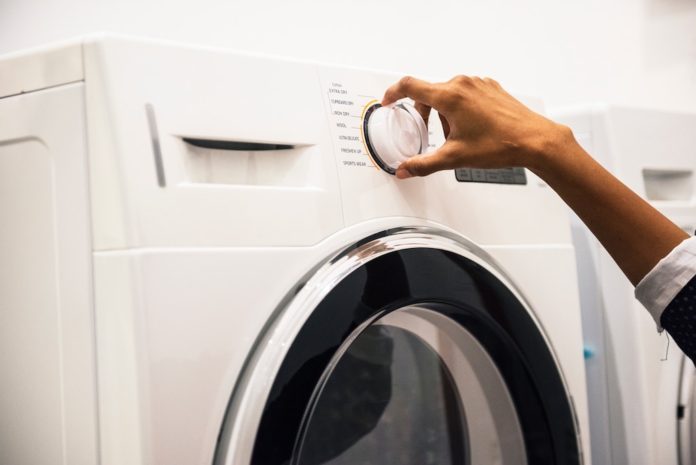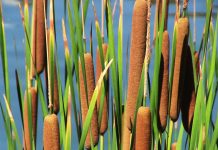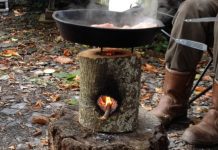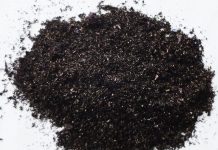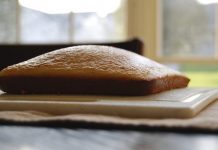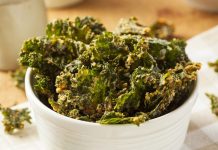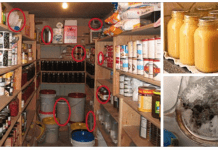Most everyone uses laundry detergent and if we’ve kept a record of the cost, at the end of the year we would be surprised at the expense for that one product alone. If we are counting our pennies, and who isn’t, it might be economical to learn more about homemade household cleaning products, specifically laundry detergent. It can be made for pennies on the dollar compared to the popular commercial brands.
The great thing is that homemade cleaning products work as well or better than the more costly products purchased from the store.
Another benefit is that our homemade versions do not have added fillers which often cause breakdown in the fiber of our clothing or cause fading and chemical residue. Here is some information to consider.
Laundry Detergent Fillers
Fillers are usually chemicals that have been added to laundry detergent to be used as a binding agent for water and to add bulk to the bottle or box of detergent, therefore making you think you are getting a better deal at the grocery store. Filler’s can count for up to 45% of your laundry detergent! Bigger is not always better!


Those fillers are there to make it appear that you are getting more for your money. It is one way for manufacturers to charge more, while you, the consumer, are getting an inferior product.
Some detergent brands may be increasing your family’s risk of asthma, skin irritation, hormone disruption, and cancer. It’s important to remember that your exposure to the toxins in your laundry soap doesn’t stop when the clothing is folded and put away. Some of these products are engineered to remain on and in your washed items – this is evidenced by the “fresh scent that lasts and lasts”.
I saw an ad recently that claimed that the fresh scent would last for many weeks. This is particularly true of the added wax-like scented beads which are put into the wash cycle. I know, they do smell good but instead of using those chemical-filled, expensive products, I have found that adding a few drops of a favorite essential oil to a woolen drier ball works very well and smells great, with no added negative side-effects; it just doesn’t last as long.
So in addition, I often add a few drops of essential oil to a few small pieces of felt then put them in the dresser drawer. Lavender, rose, jasmine and lemon are all nice but you can choose from the many options available in the essential oil world. There are many brand and scent options.
A few common fillers in your detergent are:
- 1,4 DIOXANE- a synthetic oil-based carcinogen
- GLUTEN- wheat and other grains are used to thicken and extend products
- ALCOHOL- decreases the detergents freezing point and increases the solubility
- LIMESTONE & CHALK- Calcium based to work with phosphates in increase suds
- PERFUME & COLOR- Covers the smell of chemicals and makes it look “pretty”
- SODIUM SULFATE
Facts about Fillers
- Fillers are often made of sodium sulfate. To discover if your laundry powder contains sodium sulfate you can do a simple test. Put one teaspoon of laundry powder into a cup of water and stir. Sodium sulfate will not dissolve and can be clearly seen at the bottom of the glass. Some fillers are ground down into a very fine sand-like consistency, making them more difficult or impossible to detect.
- They get into the fibers of your clothes and grind together (with washing ) therefore they lessen the life of your clothes and make them look faded and pilled.
- After just 10 washes, clothes, towels, and blankets gain 2% of their weight in detergent residue (fillers and chemicals) and are constantly being absorbed by the skin.
Save big by using “clean” detergent! I did a little poking around and found that washing machine repairmen are very aware that these fillers are causing more frequent machine breakdown. Our own repairman was very open about the subject and the shortened life span of machines due to additives and fillers in detergents.
With the cost of a washer ranging between $350. to over $1000., who can afford to replace a washing machine more often than necessary? Taking better care of your machine can give you savings that then can be used to purchase some of those special preps you’ve been wanting.
One of the main reasons we switched to making DIY laundry powder was because our youngest child had sensitive skin and would sometimes develop a rash and redness where clothes touched the skin. This reaction happened even when we switched to detergents that were touted as being mild and suitable even for babies.
We found that the two “mildest” brands caused even more skin reactions and this happened even if I ran the clothes through a double rinse cycle. It took me a while at that time to find the right detergent “recipe” that worked for her sensitive skin.
Yet another negative effect is that fillers can trap bacteria in your clothes, causing smelly, sweaty clothes to quickly smell bad again soon after washing.
Here is a website that gives grades from “A” to “F” to specific detergents and other cleaning products that you may find interesting.
People often ask if this detergent can be used in High Efficiency (HE) washing machines. Yes, it can. The first time you use this Zote recipe you may question if it is effective because it makes very few suds if any. Rest assured that if you can get over the idea that seeing suds means cleaner clothes you will see the results and be pleased.
Recipe: Zote Powdered Laundry Detergent Recipe
2 14 oz. bars of 


I have not researched this down to the chemical level but since we do have septic I have chosen not to use it. I like the smell of Zote better anyway. Some folks use Ivory soap. You choose. The next time I make laundry detergent, I am going to use Dr. Bonner’s soap bars. They are a bit more costly but without any colorings.



Let me share some information about an ongoing confusion as to what 20 Mule Team Borax is made of and if it is safe to use as a laundry product. Borax is sodium tetraborate or sodium borate. It is not boric acid (hydrogen borate), which seems to be a misconception that’s going around the web and has caused concern about using Borax for cleaning purposes.
Borax is a salt of boric acid but it is not chemically the same as boric acid. Like many other natural substances sodium tetraborate should not be ingested nor come into contact with your eyes, nor should it be applied directly to the skin. Other than that I can find no cause for alarm and no reason to fear borax when used externally in laundry soaps or cleaning supplies.
The safety studies that I could find were related to either ingesting borax or keeping it out of your eyes. 20 Mule Team Borax is considered pure boron, a natural element. It is considered non-toxic to humans even though it is toxic to insects.
1 box 


3+ cups 


2—16 oz. or 1– 32 oz. containers 
Instructions:
Finely grate the Zote soap bars. Hand grate on smallest size grate to help it dry more quickly. Spread out on cookie sheets and allow to dry for 2 days.


This step takes a little patience. It’s a good idea to wear a mask while grating the soap because it has a strong scent.


(Drying makes blending with other ingredients easier. After drying put the grated soap into a food processor in small batches, wearing a mask.)
In a very large pot or 3-gallon container begin layering all of the ingredients. Again wear a mask as the fumes and dust can be strong. When all is mixed thoroughly put into a lidded container, either plastic or glass. Use a 2 Tbsp. scoop that comes in the AWESOME Oxygen container as your measuring scoop. If you are washing a small washer-load of clothes use only one tablespoon.
You may add a scent like Unstoppables but it is not a softener and adds expense and chemicals to the detergent. I would not use Unstoppables or any added scents if this laundry detergent is to be used on clothes for babies or young children or with people who have skin allergies. As with any new product you try, be alert to any sensitivity your family might have when changing to new products.
We have not had any problems and have been using Zote based laundry detergent for about six years, but we don’t add the various chemical scents. Usually, I add a few drops of natural essential oils like lavender, lemon or sandalwood to woolen dryer balls. In addition to making the laundry smell wonderful, the laundry room smells heavenly as well.


To further reduce the cost of laundry you can use crumpled up balls of aluminum foil in place of chemical-laden drier sheets. These can be used over again several times. I’m always glad for more savings.
If you try this laundry detergent recipe and want to store enough of the individual ingredients for the next year’s batch, I have a few suggestions, gleaned from sad experience. Any powdered product stored in a cardboard can absorb moisture fairly quickly causing the contents to clump and even turn into a solid mass, especially if the box has begun to split a bit at the seam….(see photo below)


I know I could probably hit this Washing Soda clump with a hammer and put them into the food processor or blender but it’s so hard-packed that I’m not sure this would be a wise thing to do. Using a serrated spatula to scrape the block into a large container seems to work, but it isn’t something I want to repeat any time soon, even if my dear husband is willing to help. Hopefully, this will be the first and last time this challenge arises!
As soon as the boxes of Borax and Washing Soda are purchased I will put them into larger canning jars with lids along with a clay desiccant packet or oxy packs. Another way to keep the powders away from moisture would be to seal the inner part of a two-piece canning lid using a Food Saver Jar Sealer. That process takes about 10 seconds.
Another option would be to place the unopened box into a plastic bag to protect from moisture. This only needs to happen if you are storing these ingredients over the period of 6 months to a year. Just give them a check now and then.




LA’s Totally Awesome Oxygen: Cost for 32 oz. from Dollar Tree. This stuff is also great for spot cleaning carpets. It does a good job on grout and tile after making a thick paste, applying it to the area and allowing it to stay there for about 5 to 10 minutes before washing it off with a wet cloth.


Put the dried, grated soap into the food processor in batches. If you opt not to do the drying process you take the chance of ending up with a sticky substance that will not blend well with the other dry ingredients, so take the time to air dry the grated soap bars to assure an even blending of all ingredients.


The Zote soap that has been grated, dried, and then run through the food processor condenses down to about 4 cups of concentrated powder. This is two large bars. Surprisingly this pure soap “powder” melts in cold, medium and hot water with just a little agitation. Remember there are little, if any, suds. Don’t let that fool you. This is a powerful cleaner.
Next, collect all ingredients and put on a surgical type mask. Into a large container, like this 3-gallon bucket, pour all five powders and blend well and evenly.
  |
  |
  |
  |
Using a sturdy spoon blend all ingredients until evenly dispersed. If you don’t use a mask the concentrated dust from the grated soap and the Borax dust that billows into the air will get into your lungs, so don’t take the mask lightly.
Final Thoughts
Finished product: About a year’s worth of laundry detergent for $12.50! For a family of two, you can extrapolate your own family’s approximate needs based on that calculation. This will do approximately 225 loads of laundry using 2 tablespoons per load.


For extra-large or heavily soiled laundry you could use up to four tablespoons. The plastic scoop that comes in the LA Awesome Oxygen cleaner container is exactly two tablespoons.
There are no fillers or harmful substances in this detergent so a little goes a long way. Of course, there are still sensitivities to detergents so be alert when you begin using a new product. Avoid getting into your eyes or having direct contact with your skin in a concentrated form.
One question that might be on your mind is, ”Can I make liquid laundry detergent?” You sure can. The reasons I choose to make the powdered soap are simple. First, to make the same amount (enough to wash 225 loads of laundry) and using this very exact recipe, if converted into a liquid form it would equal 10 gallons! That would take up a lot of my laundry room space.
Second, the liquid version settles and clumps a little so it must be shaken up or stirred if left sitting for long.
Third, what containers should you use to store the liquid version? One might think that clean plastic gallon milk jugs would do the job. There are two drawbacks with this choice. The milk sugars cannot be completely cleansed from the plastic, so there is a possibility of contamination. The other reason is that the plastic jugs are likely to breakdown and disintegrate.
I don’t want 10 gallons of liquid laundry detergent oozing all over the floor! (This breakdown of milk bottles happened to a friend and she was only storing water!) If you have high mil, clean plastic containers in mind and you have the space then go for it and store 10 gallons.
You can choose to use two five-gallon heavy plastic buckets. They are difficult to move when full and still must be stirred every once in a while, so you’ll need a long stirring stick or agitator. I have a friend who chose this route last year and she’s quite happy in her choice.
What I have given you in this post is one recipe and one way to cut laundry costs that I have found effective and, of course, economical. There are variations and substitutions which can be used. I’d love to hear the experiences and tweaks you may have used for your laundry needs. If you have not tried to make your own laundry soap I hope you’ll put this one to the test.



